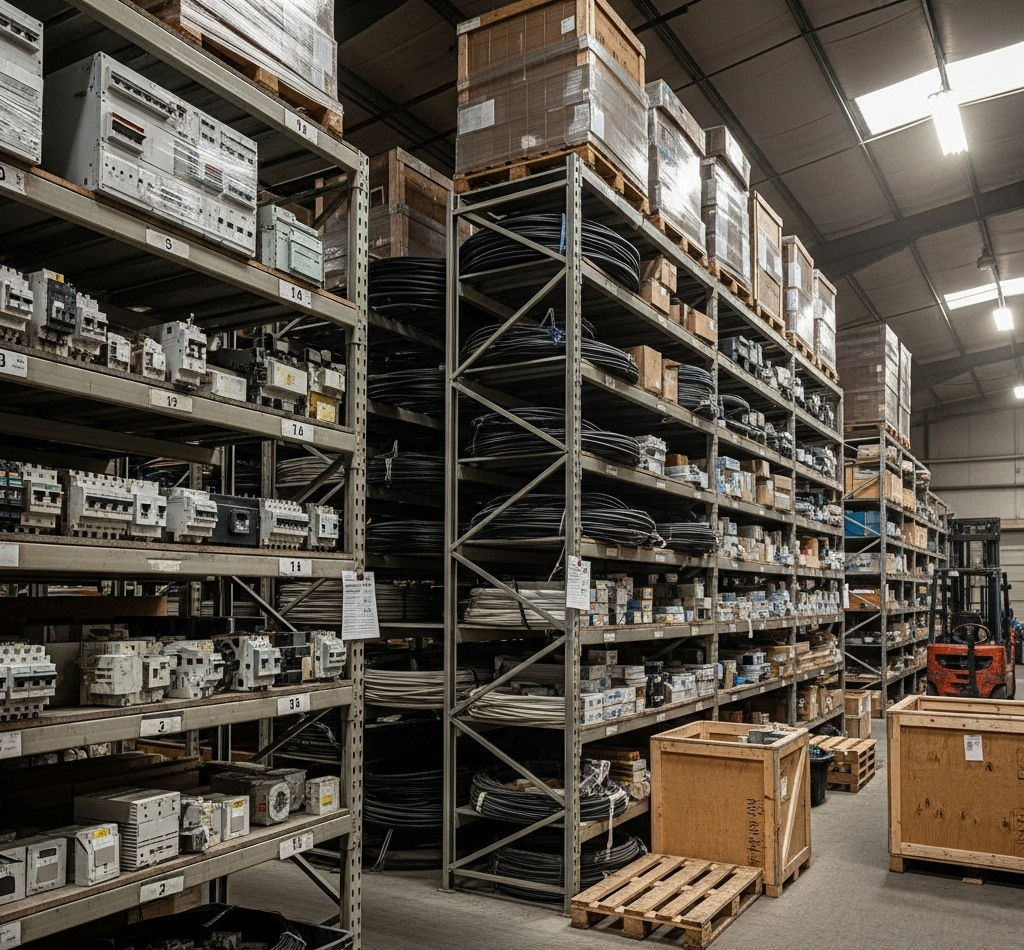
In the fast-paced world of electrical distribution and construction, managing thousands of Stock Keeping Units (SKUs) can feel like juggling live wires. From different gauges of cables and wires to switches, transformers, circuit breakers, and countless accessories, the sheer volume and variety of products pose significant challenges. Electrical distributors and contractors often deal with fluctuating demand, supply chain disruptions, and the need for precise inventory control to avoid costly downtime or overstocking. Enter procurement tools—specialized software solutions designed to streamline purchasing, inventory, and supply chain processes. These tools, including e-procurement systems, Product Information Management (PIM) platforms, and Enterprise Resource Planning (ERP) integrations, are transforming how businesses handle large-scale SKU management. In this blog post, we’ll explore the challenges, key features, benefits, and real-world examples of how procurement tools make it all more efficient.
Before diving into solutions, it’s essential to understand the pain points. Electrical SKUs are notoriously complex due to variations in specifications like voltage ratings, materials, sizes, and compliance standards (e.g., UL certifications). Distributors might stock tens of thousands of items from multiple suppliers, leading to issues like:
Without the right tools, these challenges can lead to higher costs, delays, and lost opportunities. Fortunately, procurement software addresses them head-on.
Modern procurement tools leverage automation, data analytics, and integration to tame the chaos of electrical SKU management. Here’s how they work:
Procurement software provides a single repository for all product data, allowing businesses to categorize and manage SKUs efficiently. For instance, PIM systems like Pimcore can handle millions of SKUs by organizing them into flexible hierarchies, families, and categories without data duplication. This is particularly useful for electrical products, where variants (e.g., different wire lengths or colors) multiply quickly. Tools integrate with ERPs to ensure real-time updates, reducing manual entry and ensuring consistency across channels.
Gone are the days of spreadsheets and paper logs. Procurement tools use SKUs to digitize tracking, enabling barcode scanning, RFID, or IoT integrations for real-time visibility. In construction, for example, companies like TDIndustries use SKU-based systems to manage electrical consumables like extension cords in bulk, storing them in labeled bins with scannable codes to create an “in-house hardware store.” Automated alerts for low stock trigger purchase orders, preventing shortages and optimizing storage.
These tools streamline vendor interactions through portals where suppliers can update pricing, availability, and product info directly. For electrical distributors, software like Epicor Eclipse or Lasso facilitates procurement by automating purchase orders, tracking supplier performance, and negotiating better terms based on historical data. This reduces email chains and ensures compliance with industry standards.
Advanced analytics in procurement software analyze SKU performance to identify trends, such as high-demand electrical components during peak construction seasons. AI-driven tools can predict maintenance needs for spare parts, aligning supply with real-time demand and identifying cost-saving opportunities. Features like spend analysis help consolidate purchases, cutting unprofitable SKUs and improving margins.
Procurement tools don’t operate in silos—they integrate with ERP, CRM, and e-commerce platforms. For electrical suppliers, this means syncing SKU data across sales channels, from online catalogs to field orders, ensuring accurate pricing and availability.
Implementing procurement tools yields tangible advantages, especially in the electrical sector:
In one example, a technology conglomerate used Pimcore to consolidate over 20 million SKUs from various ERPs and vendors into a single view, enabling efficient management across global operations— a scenario easily applicable to large electrical distributors.
Consider electrical distributors using specialized software like Epicor Eclipse, which manages supply chains with features tailored for electrical needs, such as innovative pricing and order management. Similarly, Lasso helps improve procurement and demand planning for electrical supplies, reducing inventory holding costs. In construction, TDIndustries’ SKU system for electrical tools saved time and enabled smarter buying, proving the value for field-based operations.
Managing thousands of electrical SKUs doesn’t have to be a shocking experience. Procurement tools empower businesses to centralize data, automate processes, and gain actionable insights, leading to greater efficiency and profitability. Whether you’re a distributor stocking vast inventories or a contractor handling project-specific needs, adopting these solutions can future-proof your operations.
© 2025 Lasso Supply Chain Software LLC
Get instant access to our report on the Top Procurement Trends of 2025 by filling out the form below.

Get instant access to our report on the Top Procurement Trends of 2025.